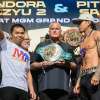A bet on a come-from-behind win is a rare yet emotionally charged market where not only numbers matter, but character too. You are betting that Team 1 (usually the home side in the bet slip, Home) will fall behind during the match, yet by the final whistle will turn the game around and win. The high odds are attractive, but without systematic analysis this wager becomes a lottery. Let’s break down when the “home comeback” truly has value and how to select it.
What "Team 1 Come-From-Behind Win" Means
“Come-from-behind” refers to a victory achieved after trailing: Team 1 was behind at least at one stage (0–1, 1–2, etc.) but finished the match on top. In the bet slip this is a separate outcome, not the same as a simple “Home Win”: if the team wins without conceding first, a bet on a come-from-behind win is settled as a loss. It’s important to read the market wording correctly: settlement is most often by the end of regulation (no extra time/penalties) unless the bookmaker’s rules state otherwise.
How Bookmakers Price the Comeback
The odds reflect a mix of factors: the home side’s attacking potential, the frequency of their comebacks this season, the game model (expected tempo, possession balance, pressing intensity), opponent strength, and the “home” effect. The rarer a team wins from behind, the more expensive this outcome becomes. The market is sensitive to live signals: an early conceded goal from a low-quality chance (low xG) often inflates the price for a comeback — a prime area to look for value.
Selection Checklist: What to Assess Before the Bet
- Form and squad depth. Freshness of key players, a strong bench (impact subs who can change the tempo), and whether the main striker/playmaker can deliver 90/40 high-intensity minutes.
- Coach’s style. Teams that ramp up pressure after halftime (aggressive setups for minutes 60–75 in football, a “run” from the second unit in basketball) flip the script more often.
- Psychology and game scripts. Proven returns from 0–1/0–2 this season? How does the team react to conceding — collapse or switch to a high press?
- Home factor. Crowd energy in decisive phases plus pitch/court nuances (dimensions, surface, lighting) amplify the effect.
- Matchups. Weaknesses in the visitors’ defense versus the home side’s strong wings, issues escaping the press, and a short opponent bench.
- Chance quality metrics. xG/xThreat, shots from premium zones, share of possession in the final third. Comebacks rarely emerge from “sterile” possession.
Pre-Match or Live: Choosing the Entry Point
- Pre-match. Sensible if the home profile is consistently comeback-friendly: late goals, quality in-game adjustments, long rotation. Odds will be lower, but so is variance.
- Live after conceding first. The sweet spot. Look for “false” visitor leads: a quick goal from their only shot while the hosts are generating pressure (a run of corners, rising xG, positional breaks in attack).
- Staggered entry. Split risk into 2–3 parts: right after 0–1, again as pressure climbs around minutes 55–65, and a final slice near the opponent’s substitution “window.”
Sport-Specific Nuances
- Football. Lower scoring makes comebacks less frequent, but the “home effect” is strongest here. Track timing and types of substitutions, wing freshness, and set pieces.
- Basketball. “Come-from-behind win” appears less often as a separate market, yet runs make turnarounds common. Watch defensive schemes after timeouts and how effective the home “small-ball” looks.
- Hockey. Rapid swings with penalties and a team’s ability to play 5-on-5 “in zone.” Power-play units for the hosts and freshness of the top line are key.
Practical Scenarios
Scenario 1 (football). Eintracht Frankfurt — Bayern. The “Eagles” score in the 7th minute from long range, but throughout the half Bayern dominate: 8–1 shots from inside the box, xG 1.2 to 0.3. Halftime adjustments are visible: a fresh inside forward, emphasis on fast half-space runs. In this configuration, a bet on the “Team 1 come-from-behind win” makes sense if Team 1 is Bayern on the slip (home) — they trail on the scoreboard yet are clearly superior in chance creation.
Scenario 2 (basketball). Los Angeles Lakers — Boston Celtics. The Celtics start better and lead by +9 mid-2nd quarter, but the Lakers win the glass and get easy transition points; their second unit is “on fire.” A third-quarter surge by the hosts is expected. With clear rebound edge and the visitors in foul trouble, a comeback-win bet is rational.
Scenario 3 (football). Tottenham — Manchester City. Spurs often concede first but have a strong counter phase after the 60th minute. If City scored a “half-chance” goal in an even game and the hosts bring on a fresh No. 9, a live entry on Team 1’s comeback gains merit.
Common Mistakes
- Betting the scoreboard, not chance quality. Trailing is necessary but not sufficient.
- Ignoring the clock. The closer the finish, the stronger the crowd synergy — and the higher the risk the visitors drop into a low block.
- Overrating “emotion.” “Character” matters, but without tactical preconditions the comeback is unlikely.
- Over-staking. Big odds tempt bigger stake size — a direct path to a drawdown.
Risk Management and Hedging Options
- Stake sizing. A fixed share of bankroll (e.g., 0.5–1.0%) smooths variance.
- Partial cash-out/hedge. At 1–1 with growing visitor pressure, you can partially hedge with the opposite outcome or with D (Draw) if the market allows.
- Alternatives. If the “come-from-behind win” is unavailable or overpriced, consider “Home Win + Both Teams To Score (Yes)” or “Home Team To Score In Both Halves” — sometimes these markets fit the script better.
When the Bet Truly Makes Sense
Choosing the “Team 1 come-from-behind win” is rational where three axes intersect: the hosts are objectively superior in chance quality, their style implies ramping up pressure after halftime, and the conceded goal came from a low-repeatability episode. Add sound entry timing and bankroll discipline, and a rare market turns into a manageable idea with positive expectation over the long run. It’s a bet that rewards reading the game beyond the scoreline and feeling the turn — exactly what separates intuition from professional play.






